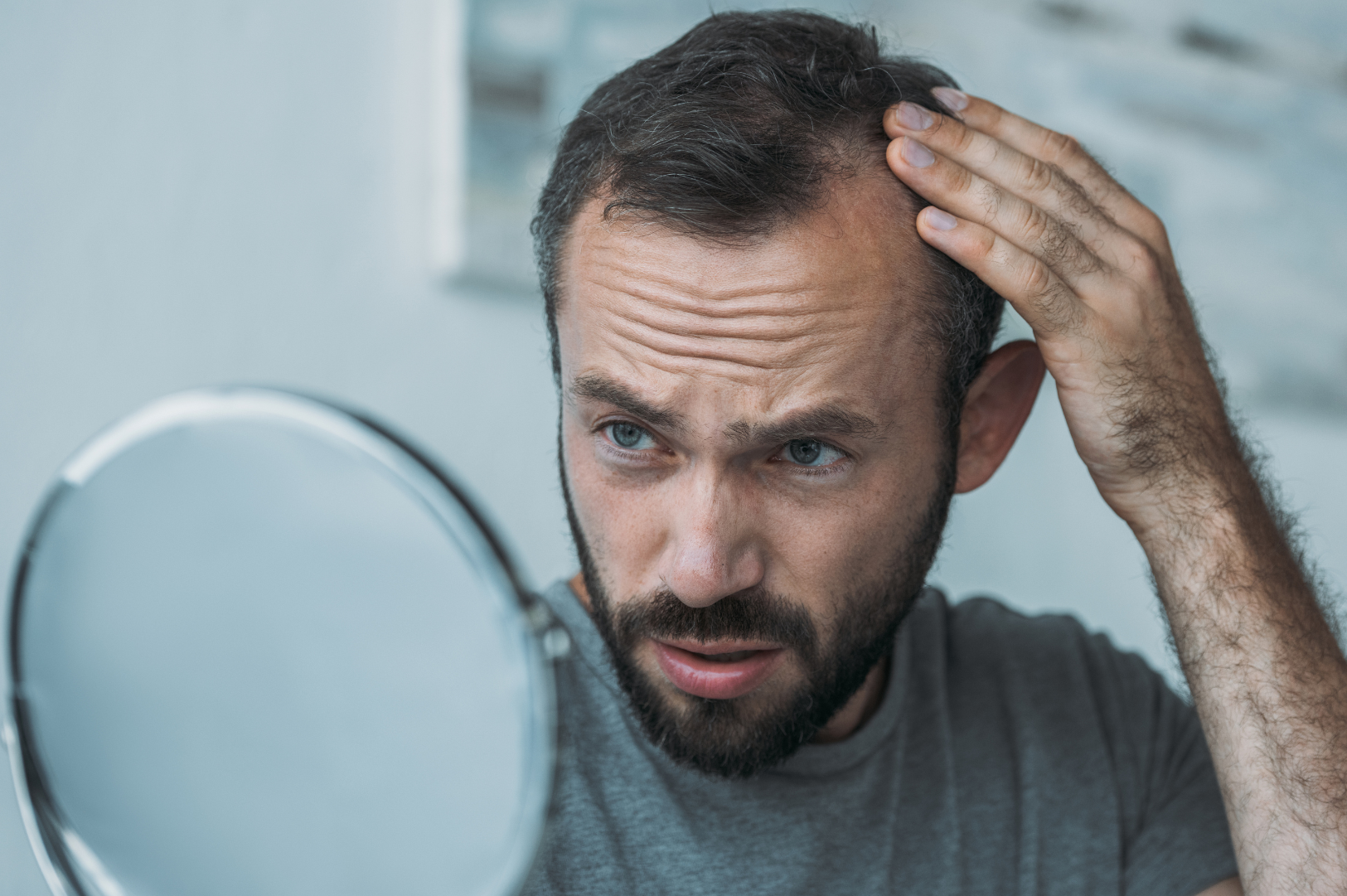
Hair loss can be distressing since it can lead to low self-esteem and embarrassment in this image-conscious society. The journey to a voluminous mane can be overwhelming. Hair loss is a common concern, irrespective of age and gender. Several factors like genetics, hormonal imbalance, stress, certain diseases, side effects of medications, and other environmental factors can cause hair loss. This article will focus on the “Male pattern hair loss” that occurs in men. This type of hair loss occurs in different stages that can begin as early as 30 years of age. Earlier, male pattern hair loss was treated with the help of medications and hair transplant surgery. However, with the advancement in science and technology, doctors offer PRP therapy, which is minimally invasive and has been trending.
Let us explore male pattern hair loss, its stages, causes, symptoms, diagnosis, and effective treatment modalities.
Male pattern hair loss, also called androgenetic alopecia, is a type of hair loss that affects men. It weakens the hair follicles, which can cause hair loss from your head (scalp) without the growth of new hair. Usually, you may lose around 100 strands of hair daily, which is normal since new hair grows back. However, when new hair growth is delayed or inhibited, and you continue to lose hair, it becomes a cause of concern.
Male pattern hair loss is common, affecting one in every two males over 40. In male pattern hair loss, you may experience hair thinning and a receding hairline (the hairline moves farther back on your head).
According to the Hamilton-Norwood scale, there are seven male pattern hair loss stages. These include:
Male pattern hair loss is usually a genetic condition (hereditary). You may inherit the condition from your parents, which is associated with a male sex hormone, namely androgen. Hair follicles have a specific growth cycle. This is usually disturbed in male pattern baldness when the follicles weaken and shrink, producing shorter and thinner hair. Eventually, the growth cycle for each hair ends, and no new hair grows in its place.
Certain risk factors can increase your susceptibility to develop male pattern baldness, including:
Hair loss is not sudden; it may take years to lose hair, which follows a certain pattern. You may lose hair gradually.
Symptoms of male pattern hair loss include:
Psychological symptoms of male pattern hair loss include:
Male pattern hair loss can be easily diagnosed by your dermatologist (a doctor specializing in diagnosing and treating diseases or conditions related to your skin, hair, and nails). Your doctor will evaluate your symptoms and record your medical and family history. This will help them analyze if the condition runs in your family.
Furthermore, your doctor will clinically examine your head and scalp using a special densitometer tool. This measures the thickness of your hair follicles to assess the areas of hair thinning or baldness. A biopsy (a tissue sample taken from the scalp and studied under a microscope) may be needed to rule out skin disease causing hair loss.
Dermatologists can recommend any one of the following treatment options based on the severity:
Male pattern hair loss is a common condition affecting males as they age. It presents with thinning hair or areas of baldness near your temples or crown, with a receding hairline.
If you notice any signs of thinning or loss of hair that is taking a toll on your mental health, consult your dermatologist immediately!